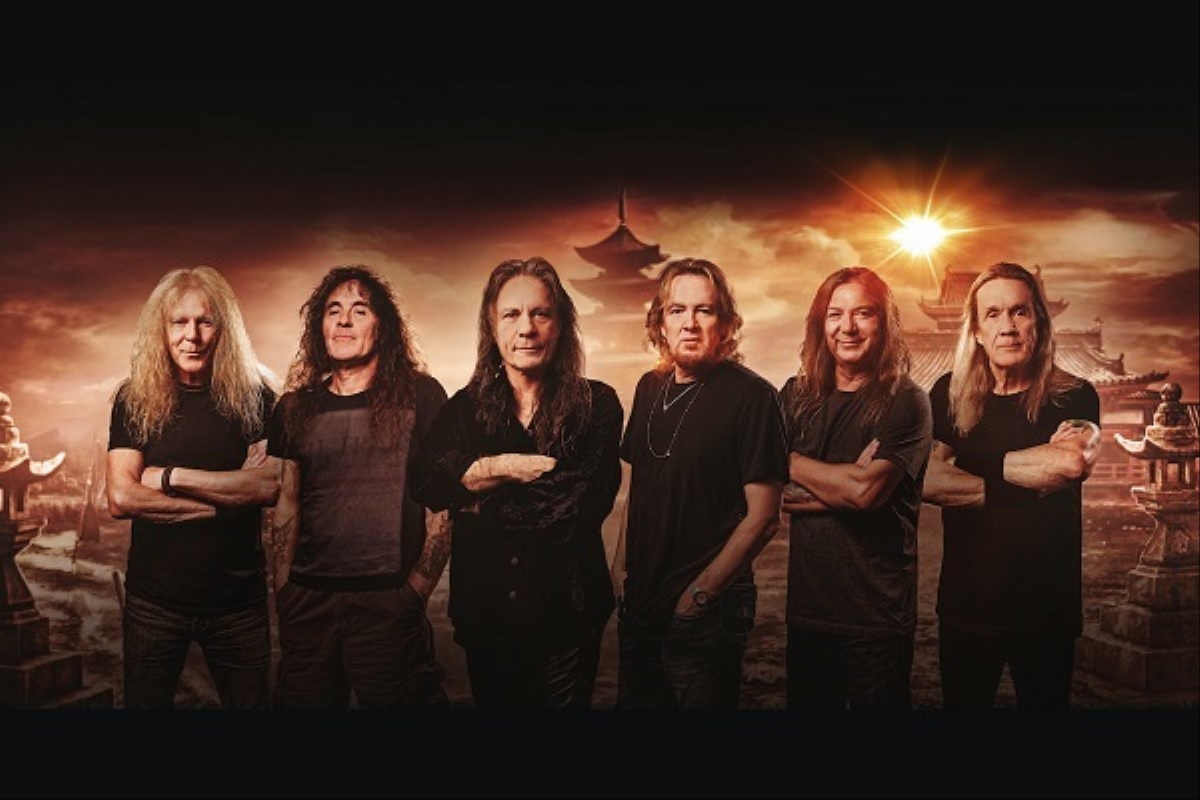
Here’s the story of Iron Maiden and how they became one of the biggest metal bands in the world
What would the music world be like without Iron Maiden? It certainly wouldn’t be as colorful, exciting or fiery, to say the least. Iron Maiden are one of the biggest metal bands in the world, and it would be difficult to find anyone who disagrees with that sentiment. From their humble beginnings in the mid-1970s and 1980s as part of the “New Wave of British Heavy Metal” to their sold-out arena shows today, Iron Maiden have, and always will, possess something special. Here’s how Iron Maiden became one of the biggest metal bands on the planet.
Iron Maiden’s early years
As with many bands, the first version of Iron Maiden wasn’t identical to the band’s lineup today. Bass player Steve Harris founded the band as a five-piece with vocalist Paul Day on vocals; guitarists Dave Sullivan and Terry Rance; and drummer Ron Matthews. This lineup didn’t last long, though. The group went through countless lineup changes before release their debut album in 1980. The ban members featured on the very first Iron Maiden record were vocalist Paul Di’Anno, bass player Steve Harris, Dennis Stratton and Dave Murray on guitar, and Clive Burr on drums.
So, Day marked the first vocalist in Iron Maiden. But, Paul Di’Anno was the first vocalist in the band to lay down pipes on a record. Then, longstanding Iron Maiden frontman Bruce Dickinson entered the fold. He appeared on a plethora subsequent records, including “The Number of The Beast,” “Piece Of Mind,” “Powerslave,” “Somewhere In Time,” “Seventh Son Of A Seventh Son,” “No Prayer For The Dying” and “Fear of the Dark.”
The Bruce Dickinson era
Bruce Dickinson was a perfect fit for Maiden. But, vocalist Blaze Bayley filled the void well when Dickinson parted ways with the band for a few years. Bayley appeared on “The X Factor” and “Virtual XI.” Then, in 1999, Dickinson rejoined Iron Maiden. Since then, he’s appeared on every one of their records, including “Brave New World,” “Dance Of Death,” “A Matter of Life and Death,” “The Final Frontier,” “The Book of Souls” and “Senjutsu.”
If you’re wondering if Iron Maiden’s band names comes from the Medieval torture device of the same moniker, you’re right. It’s spikey and aggressive nature perfectly described the kind of heavy, epic and grandiose music Iron Maiden were creating.
So, what made Iron Maiden stand out amid the “New Wave of British Heavy Metal?” First of all, even though they entered the music world as part of that scene, Iron Maiden moved past it. Instead, they solidified themselves as kingpins in the general heavy metal world. Over the years, they’ve dabbled in progressive metal, experimental and straight-ahead, heavy metal. Musically, operatic vocals and frantic, hurtling riffs will always define Iron Maiden.
Another way Iron Maiden has stood out is with their dark motifs. Their songs, and albums, often tell a story. Some of those tales are of a dark historical nature, and others just have a haunting quality. They even have a famous mascot, a rotting corpse called Eddie, who appears at all of their shows.
Iron Maiden, like bands such as Metallica and Judas Priest, were able to survive the grunge movement, too. When grunge exploded in the early-1990s, it left many hair metal bands in the dust. Bands such as Motley Crue, Poison and Ratt, as successful are they were, suddenly fell by the wayside. Fans started to favor the stripped-down, lo-fi approach coming out of the Seattle scene. But, even with that shift in tastes, metal fans – those who were into a more pure form of metal than the glam version – stayed true to Iron Maiden and their contemporaries.
Iron Maiden in the 2020s
Iron Maiden’s current lineup include bass player and songwriter Steve Harris; vocalist Bruce Dickinson; guitarists Dave Murray, Adrian Smith and Janick Gers; and drummer Nicko McBrain. Their latest album, 2021’s “Senjutsu,” marked Iron Maiden’s 17th studio release. The singles “The Writing on the Wall” and “Stratego” topped the metal charts upon release. Moreover, the shows Iron Maiden have played to support “Senjutsu” have been massive, arena-sized gigs, which has often sold out.
Yes, Iron Maiden are alive and well. Their theatrical live shows, strong songwriting, epic storytelling lyrics and operatic vocal lines have solidified them as one of metal’s most exciting bands to follow. What’s more, their story is just starting. Find more on Iron Maiden via their official website here.
- Metallica’s Greatest Songs of the Past 25 Years - October 16, 2025
- Testament, “Para Bellum” – Track-by-Track Album Review - October 10, 2025
- Judas Priest Bassist Ian Hill Talks Metal, Legacy and Ozzy Osbourne – Interview - October 1, 2025
